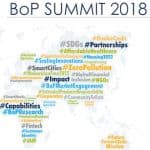Three ‘Golden Rules’ of Investing in Health-Focused BoP Models
Over the past decade, investing in the BoP has taken root across the development sector. While there is great promise in treating the world’s 4.5 billion poor as consumers rather than aid recipients, the reality is that this exuberance has been difficult to translate into viable business models, particularly within the health sector. This is in contrast to some other emerging areas of focus for impact investors – such as agriculture and energy – where there appear to be both bigger pipelines of investable businesses and greater returns.
With this in mind, we were particularly happy to be a part of the first Financing and Innovation in Global Health Forum, which recently brought together stakeholders to launch a focused dialogue and potential collaborations to address the unique challenges and opportunities related to financing efforts to achieve health outcomes. This included space for reflection on the experience and lessons learned deploying capital into businesses serving low-income consumers. The opportunity and need couldn’t be more pronounced: With an estimated $140 billion needed per year to finance the Sustainable Development Goals in health alone, the role of private sector finance is more critical than ever.
While the road has been hard for many, we are starting to see some emerging successes. Through Dalberg’s work in this sector over the past 15 years, we’ve had the opportunity to explore this topic from a variety of angles. In analyzing these successes, we’ve synthesized three golden rules of investing in health-focused BoP models to help guide businesses, investors and start-ups. These rules, like all rules, have exceptions, but we’ve found them to be useful guideposts:
1ST GOLDEN RULE: BUSINESS, NOT SUBSIDY
Many forms of health care delivery throughout the world have some type of subsidy from governments, employers, donors or others. However, from our observations, large subsidies can also remove the discipline needed to create business models that stand on their own two feet.
In contrast, many of the most successful models are highly market driven. A great example is Equity Bank in Kenya, a financial services provider that also sells health insurance. Equity Bank puts serving mass retail at the core of its business strategy, targeting customers deemed unbankable by other banks. Equity developed innovative products that were rooted in a deep understanding of the financial services needs and behaviors of the BoP and MSME (micro, small and medium enterprises) customers. It also developed innovative distribution models to lower transaction costs and increase reach. Equity Bank has led the way in agency banking in Kenya, which has grown to be an important and ubiquitous channel. With this strategy, Equity Bank grew from insolvency in 1993 to become one of Africa’s largest financial services conglomerates, with assets of nearly $4 billion, a customer base of more than 10 million and presence in six countries.
2ND GOLDEN RULE: POOR CUSTOMERS ARE SAVVY CUSTOMERS
We too often assume poor customers’ purchases are driven almost entirely by cost and therefore strip features away from a product offering – like branding and marketing – to get to the lowest possible price. The reality is that while cost certainly matters, people – even with very modest means – are typically picky and smart buyers.
We’ve seen in our own work just how sophisticated and discerning customers are. For example, in Nigeria, many consumers we observed will purchase diabetes drugs from very specific pharmacies and with particular branding, while being much less selective when purchasing antimalarials, often from a bin in the corner store.
Novartis’ “Healthy Families” social business line has come to understand this. Launched in India, Healthy Families initially encountered obstacles but is now succeeding through a focus on quality, service and treating the most low-income customers as valued patrons. They have paired their sales force with health educators to enhance service, build awareness and inspire confidence. Increasingly, they’ve found that service, brand and an association with upward mobility matter. For this customer segment in particular, if one is spending money on something, it better be good.
3rd GOLDEN RULE: LESS IS NOT MORE
In the early days of business targeting the BoP, there was a significant focus on smaller products – e.g., selling soap or cosmetics in smaller portions aligned to BoP consumers’ ability to pay. But, particularly in more complex and often higher value areas of health care, the innovation needs to move beyond size into fairly dramatic transformations or model disruptions.
A key example of this is in the insurance industry. Across sub-Saharan Africa, the hundreds of recent deployments of health microinsurance are mostly failed endeavors as measured by market penetration and impact – covering just 2.4 million people and 5.5 percent of the total market as of 2013. There are a number of reasons for this: the concept of insurance isn’t familiar or intuitive; the economics of health insurance are extremely challenging for these patient populations; and perhaps most importantly, simply creating a smaller version of existing products didn’t work.
However, companies like MicroEnsure have found a way to disrupt the existing market and overcome its shortcomings by working through nontraditional players – trusted mobile operators who are already serving these customers. They have cultivated a win-win business model with these partners: Basic hospital coverage which mobile operators can offer to their customer base as a way to further fortify their own customer retention and revenue model. MicroEnsure is now serving 18 million people in sub-Saharan Africa and South Asia.
These are just some of the clear stories of emerging success in investing to reach low-income consumers – with both financial and social benefits. But the road ahead is not easy or necessarily clear. What worked to create value and success in more traditional industries or geographies often will not work in this sector. We hope this type of sharing – through health forums, publications and beyond – will encourage more candor so that we can learn from each other and, ultimately, be more effective in supporting health-focused business models that reach low-income consumers.
Vicky Hausman is a partner at Dalberg and regional director of its Americas region, Erin Barringer is an associate partner in Dalberg’s New York office, and Carlijn Nouwen is a partner in Dalberg’s Johannesburg office.
Photo: An Equitel staff member takes one of the Equity Group Holdings shareholders through the Equitel SIM Card features during the 12th annual General Meeting held recently in Nairobi. Photo courtesy of Equity Bank on Facebook
- Categories
- Health Care



